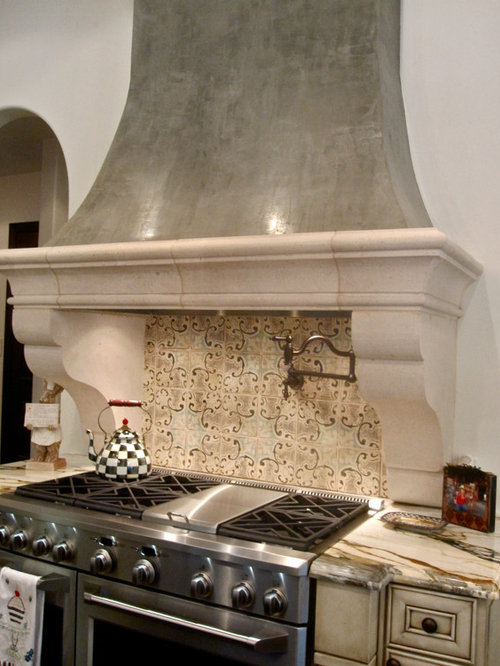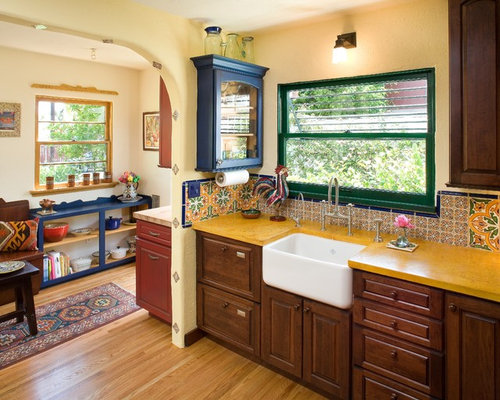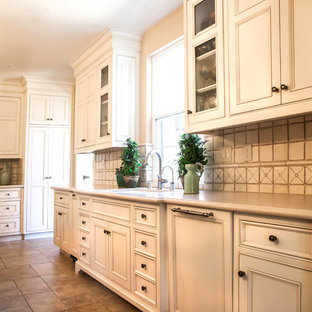Spanish kitchen tile backsplashes are a stunning way to infuse your kitchen with color, texture, and cultural heritage. These tiles are renowned for their intricate patterns, vibrant colors, and handcrafted appeal, making them a popular choice for homeowners looking to create a warm and inviting kitchen space. The allure of Spanish tiles lies in their ability to blend traditional craftsmanship with contemporary design, offering a unique aesthetic that can elevate any kitchen.
When selecting Spanish tiles for your backsplash, it’s essential to consider the overall design and color scheme of your kitchen. Spanish tiles often feature bold colors and intricate designs, so you’ll want to choose a pattern that complements your existing decor. Popular choices include Talavera tiles, which are known for their bright colors and detailed patterns, and Moorish tiles, which feature geometric designs and rich, earthy tones. Both styles can add a touch of elegance and authenticity to your kitchen.

Installation of a Spanish tile backsplash requires careful planning and precision. Before you begin, measure the area where you plan to install the tiles to determine how many tiles you’ll need. It’s a good idea to purchase extra tiles to account for any mistakes or breakages during the installation process. Prepare the wall by cleaning it thoroughly and ensuring it is smooth and dry. Applying a primer can help the adhesive stick better and ensure a long-lasting installation.
The next step is to lay out your tiles to see how they fit together and to plan the placement of any feature tiles or intricate patterns. This dry run will help you make any necessary adjustments before you start adhering the tiles to the wall. Mix your tile adhesive according to the manufacturer’s instructions and apply it to the wall using a notched trowel. Work in small sections to prevent the adhesive from drying out before you have a chance to place the tiles.

When placing the tiles, start at the bottom center of your backsplash area and work your way outwards and upwards. This approach helps ensure that the tiles are level and that any cuts or adjustments are made at the edges, where they are less noticeable. Use tile spacers to maintain consistent gaps between the tiles for grouting. After placing each tile, press it firmly into the adhesive to ensure a secure bond.
Once all the tiles are in place, allow the adhesive to dry completely before proceeding with grouting. Grout not only fills the gaps between the tiles but also helps to secure them and protect against moisture. Choose a grout color that complements your tile design – a contrasting grout can highlight the pattern, while a matching grout can create a more seamless look. Mix the grout according to the manufacturer’s instructions and apply it with a rubber grout float, pressing it into the gaps between the tiles.

After the grout has been applied, wipe away any excess with a damp sponge, being careful not to disturb the grout lines. It’s important to clean the tiles thoroughly to remove any grout residue before it dries, as it can be difficult to remove once hardened. Allow the grout to cure for the recommended time before sealing it to protect against stains and moisture. Applying a grout sealer will help maintain the appearance and durability of your backsplash over time.
Maintenance of a Spanish tile backsplash is relatively straightforward. Regular cleaning with a mild detergent and water will keep the tiles looking fresh and vibrant. Avoid using abrasive cleaners or tools that could damage the tiles or grout. Periodically check the grout for any signs of cracking or wear and reseal it as needed to maintain its protective properties.
Incorporating Spanish tiles into your kitchen backsplash can also be an opportunity to showcase your creativity. Consider mixing and matching different patterns and colors to create a unique design that reflects your personal style. Feature tiles with intricate designs can be used as focal points, while simpler, solid-colored tiles can provide a balanced backdrop. The versatility of Spanish tiles allows for endless design possibilities.

In addition to their aesthetic appeal, Spanish tiles are also durable and practical. Made from materials like ceramic and porcelain, they are resistant to heat, moisture, and stains, making them an ideal choice for kitchen environments. Their durability ensures that your backsplash will remain beautiful and functional for years to come, even with the rigors of daily use.
The history and craftsmanship behind Spanish tiles add a rich cultural element to your kitchen. Many Spanish tiles are handcrafted by skilled artisans using traditional techniques passed down through generations. This attention to detail and dedication to quality is evident in the intricate designs and vibrant colors of the tiles. By choosing Spanish tiles for your backsplash, you are not only enhancing your kitchen’s aesthetic but also supporting a time-honored craft.
When it comes to pairing Spanish tiles with other elements in your kitchen, consider the overall theme and color palette. Spanish tiles work well with a variety of styles, from rustic and traditional to modern and eclectic. For a cohesive look, coordinate your tile colors with your cabinetry, countertops, and flooring. Natural materials like wood and stone can complement the earthy tones and textures of Spanish tiles, creating a warm and inviting atmosphere.

If you’re looking to make a bold statement, consider using Spanish tiles to create a full-height backsplash that extends from the countertop to the ceiling. This approach can add drama and visual interest to your kitchen, making it a focal point of the space. Alternatively, you can use Spanish tiles as an accent within a larger backsplash design, combining them with simpler, neutral tiles to create a balanced and visually appealing look.
For those who prefer a more subtle approach, incorporating Spanish tiles as a border or trim can add a touch of elegance without overwhelming the space. This method allows you to enjoy the beauty and craftsmanship of Spanish tiles while maintaining a more understated design. Borders and trims can be used to frame a window, highlight a cooking area, or create a decorative edge around your backsplash.
Finally, consider the impact of lighting on your Spanish tile backsplash. Proper lighting can enhance the colors and patterns of the tiles, bringing out their full beauty. Under-cabinet lighting is an excellent option for illuminating your backsplash and creating a warm, inviting ambiance in your kitchen. Whether you choose LED strips, puck lights, or another type of lighting, the right illumination can make your Spanish tile backsplash truly shine.

Common Mistakes to Avoid
Skipping the Dry Run: Not laying out the tiles before installation can lead to misaligned patterns and uneven cuts. Always do a dry run to plan the placement and ensure a cohesive design.
Using the Wrong Adhesive: Choosing the incorrect adhesive can result in tiles not sticking properly. Make sure to use an adhesive recommended for your specific type of tile and kitchen environment.
Neglecting Tile Spacers: Failing to use tile spacers can cause inconsistent gaps and crooked tiles. Always use spacers to maintain even grout lines and a professional finish.
Rushing the Grouting Process: Applying grout too quickly or not cleaning excess grout properly can leave residue and uneven lines. Take your time and clean thoroughly to achieve a clean, polished look.
Ignoring Sealing: Not sealing the grout can lead to stains and moisture damage over time. Always seal the grout after it cures to protect your backsplash and ensure longevity.
Overlooking Regular Maintenance: Failing to clean and maintain your tiles can result in dull, dirty surfaces. Regular cleaning and occasional resealing will keep your backsplash looking vibrant and new.

What are the benefits of using Spanish tiles for a kitchen backsplash?
Spanish tiles offer a combination of aesthetic appeal, durability, and cultural heritage. Their vibrant colors and intricate patterns can enhance the visual appeal of your kitchen, while their durability makes them resistant to heat, moisture, and stains. Additionally, the craftsmanship behind these tiles adds a unique and authentic touch to your kitchen design.
How do I clean and maintain a Spanish tile backsplash?
Regular cleaning with a mild detergent and water is usually sufficient to keep your Spanish tile backsplash looking fresh. Avoid abrasive cleaners and tools that can damage the tiles or grout. Periodically check the grout for cracks or wear and reseal it as needed to maintain its protective properties and prevent moisture damage.
Can I install Spanish tiles myself, or should I hire a professional?
Installing Spanish tiles can be a DIY project if you have some experience with tiling and are comfortable with the necessary tools and techniques. However, due to the intricate patterns and the need for precision, hiring a professional can ensure a flawless installation. A professional can also provide valuable advice on layout and design to achieve the best results.

How do I choose the right grout color for my Spanish tile backsplash?
The grout color can significantly impact the overall look of your backsplash. A contrasting grout color can highlight the tile patterns and make them stand out, while a matching grout color can create a more seamless and cohesive look. Consider the colors and patterns of your tiles, as well as the overall design of your kitchen, when selecting grout color.
Are Spanish tiles suitable for all kitchen styles?
Spanish tiles are versatile and can complement a variety of kitchen styles, from rustic and traditional to modern and eclectic. The key is to choose tile patterns and colors that coordinate with your existing decor. Whether you opt for a bold, full-height backsplash or a more subtle accent, Spanish tiles can add warmth and character to any kitchen.
What should I do if a tile gets damaged or cracked?
If a tile gets damaged or cracked, it’s important to replace it promptly to maintain the integrity and appearance of your backsplash. Carefully remove the damaged tile and clean the area of any adhesive residue. Apply new adhesive and place the replacement tile, ensuring it aligns with the surrounding tiles. Reapply grout and seal it to complete the repair and protect the new tile.

Spanish Tile Backsplash

Home Decorating Ideas – The Spanish Style

Accent tile above range, fancy hood Stylish kitchen

Kitchen Tile Backsplash / Glass Subway Tile Backsplash

Related Posts:
- Faux Tile Kitchen Backsplash
- Purple Kitchen Backsplash
- Choosing Beautiful Kitchen Backsplash Tiles
- Kitchen Backsplash For White Kitchen
- Small Kitchen Backsplash Ideas
- Blue Subway Tile Kitchen Backsplash
- Backsplash For Kitchen At Lowes
- Kitchen Backsplash Designs Behind Stove
- Kitchen Backsplash Bullnose Edges
- Painting Brick Backsplash In Kitchen